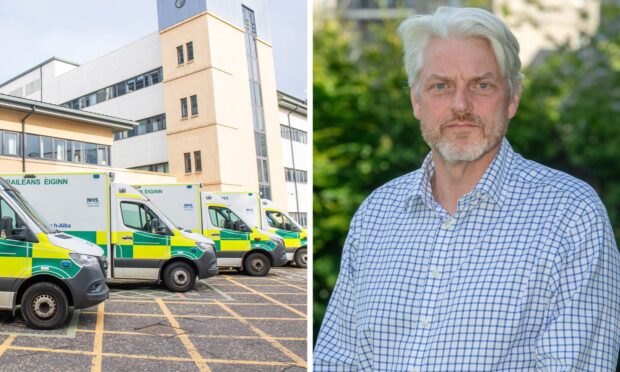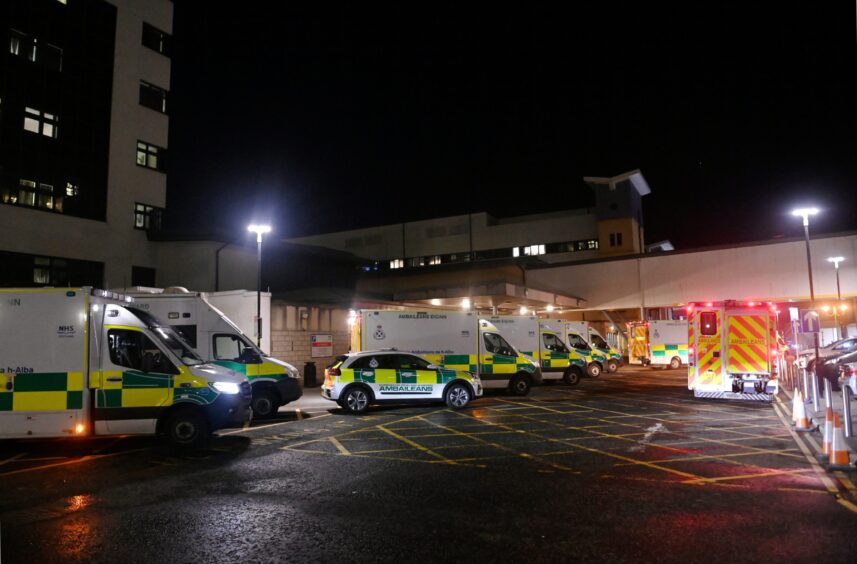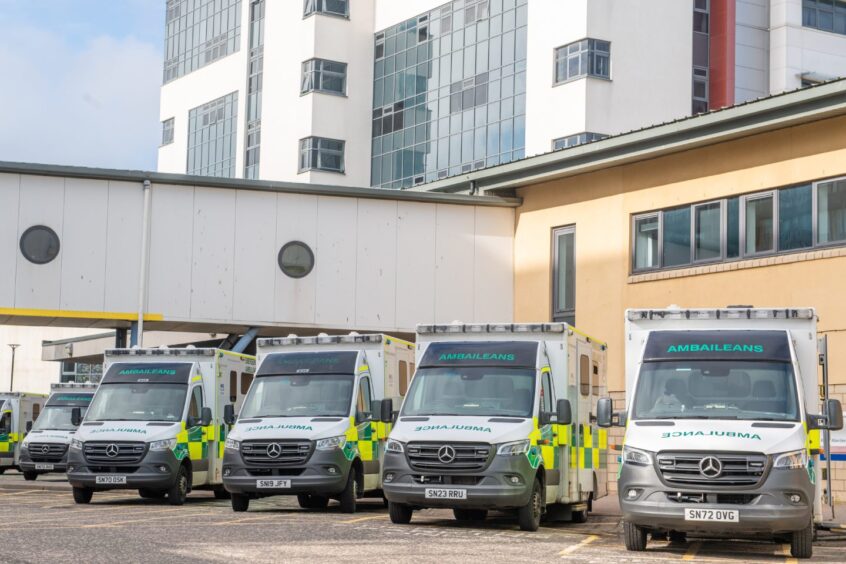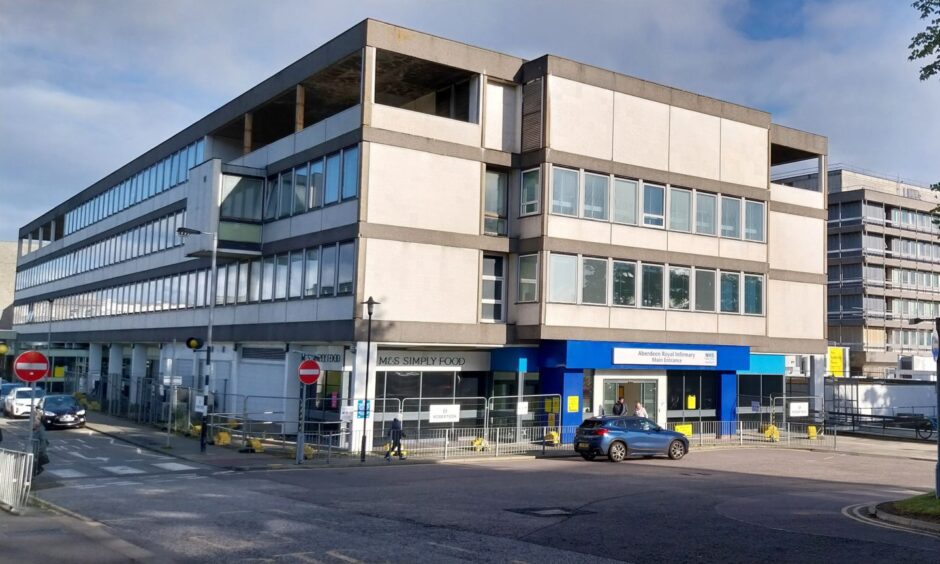NHS Grampian will add extra beds and create a new unit in its Emergency Care Centre in a bid to reduce ambulance waiting times.
Interim chief executive Adam Coldwells revealed the health board’s plans at a major meeting earlier today.
Later this month, changes will be made to the way ambulance staff deal with patients as they arrive by ambulance at Aberdeen Royal Infirmary to the Acute Medical Initial Assessment (AMIA).
This is a ward where the majority of those arriving have been referred by their GP or other community-based clinicians for further investigations.
The move will not affect patients or ambulances arriving at the hospital’s Emergency Department.
Once medics there have the patient in their care, ambulance crews will leave and attend their next call.
At the moment, when there is not enough space in this unit, that can leave paramedics waiting outside for hours with patients before they are taken in for treatment.
The initiative will be launched for the first time in Grampian and could be copied in other locations if it proves to be a success.
How will the new measure work?
NHS Grampian will add eight new beds very close to the front door of ARI to help tackle the crisis.
Mr Coldwells hopes this will help to reduce the queues of patients waiting in ambulances outside.
He explained: “The unit broadly relates to GP referrals.
“A GP will see a patient, make an assessment of them and then decide they need to go to hospital… The vast majority of people who arrive at this unit come through that route.”
During the meeting, the health boss revealed that most referrals from GPs arrive at the AMIA “in a bulge” after lunchtime, typically after home visits are completed.
Work will now be carried out with GP leads across the region in a bid to stop patients arriving all at once to try and flatten the curve.
Mr Coldwells said: “It’s not that we have too many people in a day, it’s how they arrive in a cluster.
“We are now going to look at that…it may or may not be something GP leads can do a bit differently.”
But, he admitted queues were still happening and apologised for anyone caught up in the unfortunate situation.
“We’ve still got people queuing in ambulances and that’s simply not OK,” he stated.
“That isn’t what any of us want, and I am genuinely sorry for anyone that ends up queuing in an ambulance day or night, it’s absolutely not what we want.
“We’ve tried a number of schemes and they have all done something positive but they’ve not had anything like the impact on the queuing ambulances that we’d expect.”
What has been done to tackle ambulance waiting times?
To date, NHS Grampian and the ambulance service have been collaborating closely on other measures aimed at providing “safe and timeous” handovers.
This includes Call before you Convey and the Safe Transfer of Patients (SToP) project.
Mr Coldwells said these schemes have had a “positive” impact, but more can still be done.
He said: “We have done a number of schemes and they’ve all been helpful but none of them have scaled at the level that removes the ambulance queue.
“I hope the next one will improve it more dramatically than previous schemes have.
“It’s a test of change so we will see how it goes and what level of impact it does or doesn’t have.”
Waiting also blamed on bed capacity
The queues are also partly to blame due to the lack of capacity at ARI.
The health chief added: “It runs pretty full most of the time and so as we get an increase in demand, our ability to respond to that is quite slow as it settles out.
“That would peak and result in a queue.”
Mr Coldwells continued: “The key thing is that we are trying to take that bump of activity just to make it slightly more level by having just a small extra capacity.
“People will still be waiting, there will still be some queuing but they will do so inside the hospital.
“But, a really important part of that is that ambulances are then free to go and deal with other people who may be very ill in the community.”
Mr Coldwells admits this latest scheme is “not a perfect solution”, but he is hopeful it will be an improvement for both ambulance staff and patients arriving at ARI.
Read more





Conversation